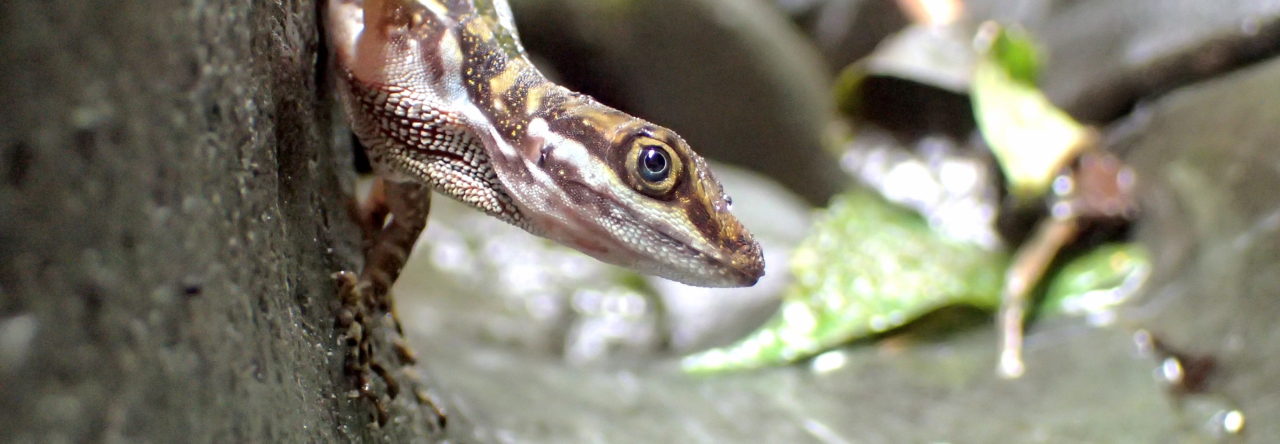
A time calibrated tree from Townsend et al. and photographs of Polychrus (from http://reptile-database.reptarium.cz/species.php?genus=Polychrus&species=gutturosus), Anolis, and Basiliscus (from http://scienceblogs.com/tetrapodzoology/2009/01/something_new_about_basilisks.php)..
For decades, anole have been assigned to Polychrotidae, a family or subfamily of Iguania whose core members have always included Anolis and Polychrus. In spite of the morphological similarities shared by these genera, molecular studies conducted over the past decade have consistently recovered a non-monophyletic Polychrotidae and have never recovered strong support for a sister relationship between Polychrus and Anolis. In recent Bayesian and maximum likelihood analyses of 29 loci sampled from 47 iguanians and 29 outgroup taxa, Townsend et al. (2011) drive the final nail in the coffin of the notion that Anolis and Polychrus are closely related and form a clade that should continue to be recognized as Polychrotidae. The sister-group relationship between Anolis and Polychrus is completely absent from the posterior distribution of trees generated from Townsend et al.’s 29-locus concatenated dataset and this relationship appears in only one or two of their 29 single-gene trees. As a result, Townsend et al. limit Polycrhotidae to Polychrus and resurrect the family name Dactyloidae for Anolis. Although they acknowledge that Dactyloidae is a less intuitive name for this clade than Anolidae, the latter is junior synonym of the former, having been coined by Cope (1864) some 20 years after Fitzinger (1843) recognized Dactyloidae. Students of squamate phylogenetic systematics should definitely check this paper out, Townsend et al.’s results concerning Polychrotidae are only one of their many interesting insights.











